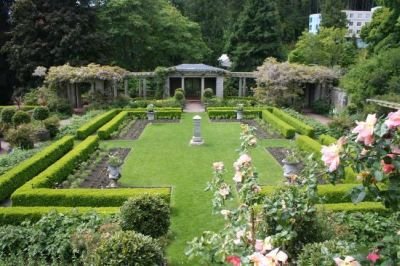Some Ideas on Hilton Head Landscapes You Need To Know
Some Ideas on Hilton Head Landscapes You Need To Know
Blog Article
Little Known Questions About Hilton Head Landscapes.
Table of ContentsExcitement About Hilton Head LandscapesHilton Head Landscapes Can Be Fun For AnyoneThe Main Principles Of Hilton Head Landscapes 8 Simple Techniques For Hilton Head LandscapesThe 8-Second Trick For Hilton Head LandscapesThe Facts About Hilton Head Landscapes RevealedEverything about Hilton Head Landscapes
Line develops all types and patterns and can be used in a selection of methods in the landscape. Line in the landscape is created by the side in between two products, the synopsis or shape of a kind, or a long straight attribute. Lines are an effective tool for the designer because they can be made use of to develop a limitless range of shapes and forms, and they regulate motion of the eye and the body.

Lines in the landscape. The residential properties of lines determine just how individuals respond to the landscape, both mentally and literally.
Indicators on Hilton Head Landscapes You Need To Know
Straight lines are most typically located in hardscape sides and product. Curved lines create an informal, all-natural, unwinded personality that is linked much more with nature and unbalanced balance. Curved lines move the eye at a slower speed and add secret to the area by creating covert views. Vertical lines relocate the eye up, making a room really feel bigger.
Vertical lines in the landscape include tall, slim plant product, such as trees, or tall frameworks, such as an arbor or a bird home on a post. Straight lines relocate the eye along the ground airplane and can make an area feel bigger. Reduced lines are much more controlled and create a sensation of rest or repose.
Getting My Hilton Head Landscapes To Work
Low lines are produced by reduced yard walls, sidewalks, and short hedges. Lines are used to attract kinds on a plan. In plan view, they specify plant beds and hardscape areas. Lines are likewise produced by the vertical types of constructed functions and plant product. There are three main line kinds that create type in the landscape: bedlines, hardscape lines, and plant lines.
Bedlines link plant product to your home and hardscape since the eye adheres to the line, moving the stare with the landscape. Hardscape lines are produced by the edge of the hardscape, which defines the constructed structure. Line can likewise be produced by long and narrow materials, such as a fencing or wall.
The smart Trick of Hilton Head Landscapes That Nobody is Talking About
Type is located in both hardscape and plants, and it is generally the dominant visual element that spatially organizes the landscape and typically figures out the style of the garden. The kind of structures, plant beds, and garden accessories also figures out the general type style of the garden. Formal, geometric forms include circles, squares, and polygons.
Plants create kind in the yard with their details or silhouettes, however form can additionally be specified by a space or unfavorable area between plants - landscapers in bluffton sc (https://sketchfab.com/h1tnhdlndscps). Circles can be full circles, or they can be separated right into half circles or circle sections and integrated with lines to create arcs and tangents
Not known Details About Hilton Head Landscapes
Circles can additionally be extended into ovals and ellipses for even more variety and rate of interest. Circles are a solid layout kind because the eye is always attracted to the center, which can be made use of to stress a prime focus or link various other forms. Number 2. Round forms in hardscape and yard panels.
The square type can likewise be fractional and pre-owned repetitively to create a grid pattern. Unlike circles, squares are stronger on the brink, which can be aligned or overlapped to develop unique patterns and more complicated forms. Polygons are many-sided types with straight sides. Triangles, for example, are three-sided polygons.
Meandering lines usually imitate the natural program of rivers or streams and can be referred to as smooth lines with deeply rounded wavinesses. Meandering lines (Figure 3) work well for pathways, plant bedlines, and dry stream beds. Twisting lines can include interest and enigma to a yard by leading viewers around edges to discover brand-new sights and areas.
Hilton Head Landscapes Fundamentals Explained

Usual plant types are well established and standard, as form is the most regular and identifiable characteristic of plants. Kind can also be developed with the massing of plants, where the overall mass produces a different kind than a the original source specific plant.
A highly different type must be made use of with careone or 2 work well as a centerpiece, yet way too many create disorder. All-natural plant types, as opposed to over-trimmed types, should establish the bulk of the make-up. The significance of total type is extra or less based on the viewing perspectivethe type of a tree can show up rather various to a person standing under the cover versus viewing the tree from a range in an open field.
The Buzz on Hilton Head Landscapes
Plant types likewise produce and specify deep space or open areas in between the plants, creating either convex or concave forms in deep spaces. High-arching tree branches commonly produce a concave open space under the branches, and a round canopy with low branches fills the space to create a convex kind outdoors room under the tree.

Report this page